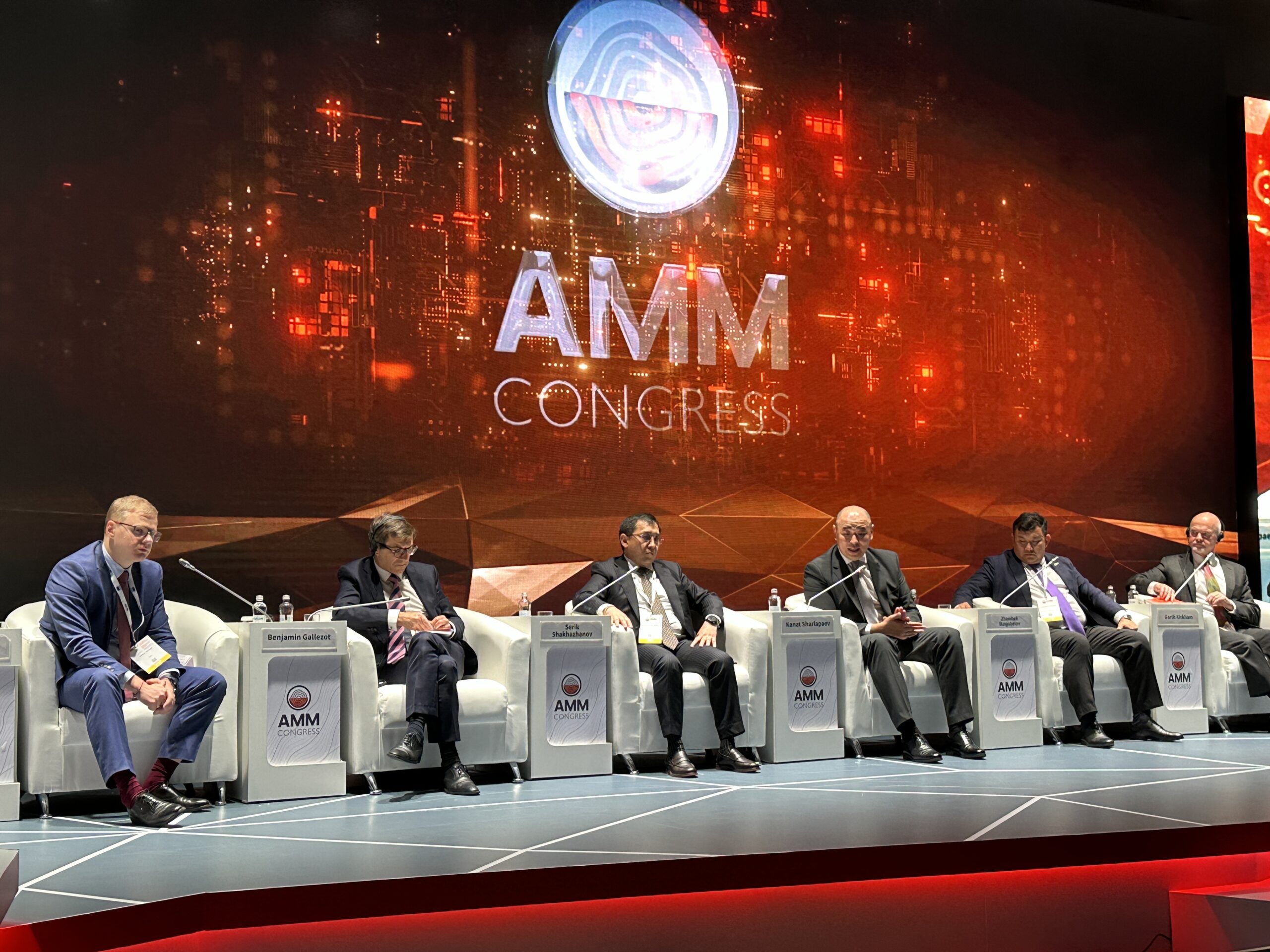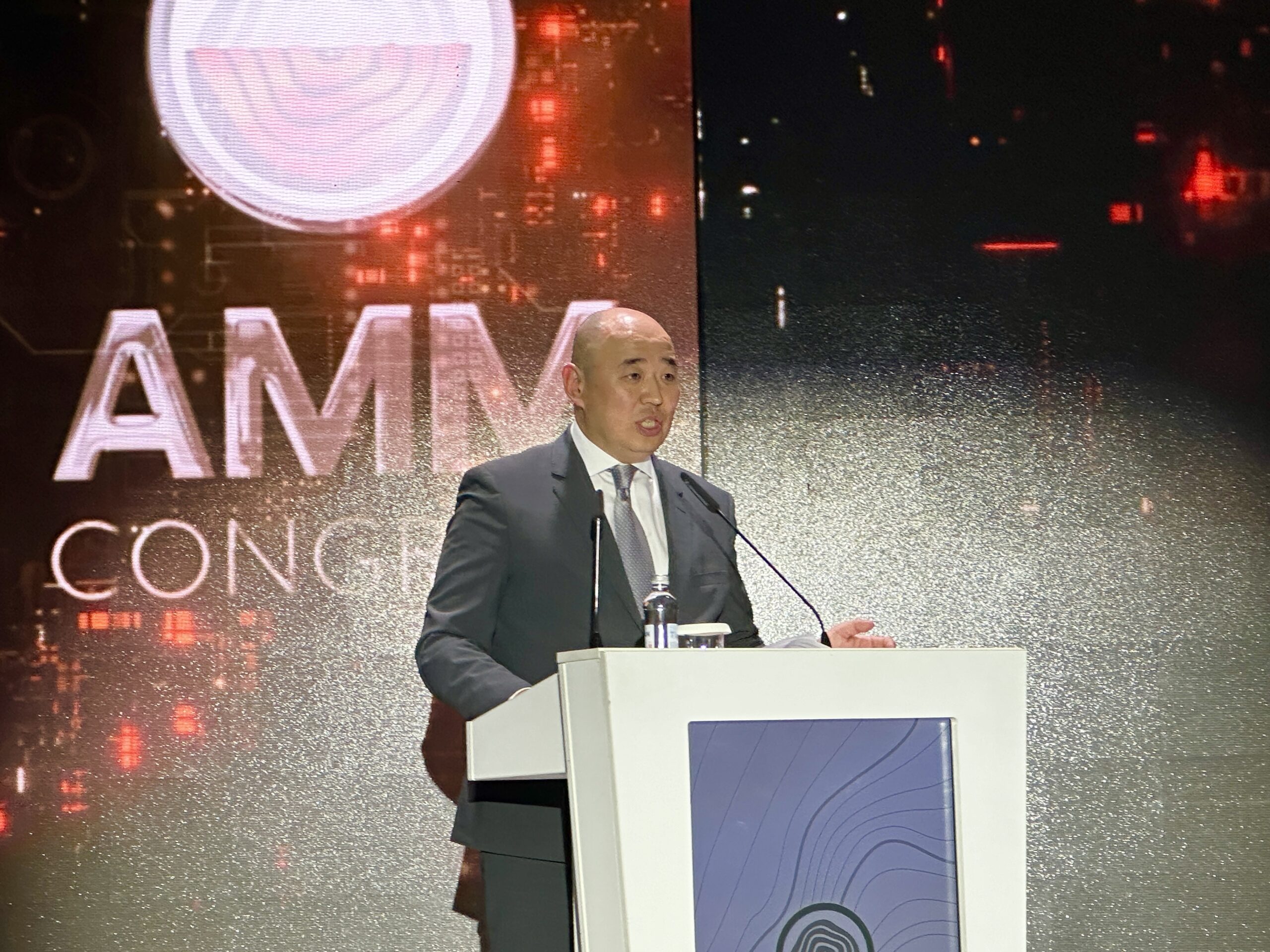ASTANA – The prospects, challenges and the current state of critical minerals and mining sectors in Kazakhstan were discussed at the 14th Astana Mining and Metallurgy (AMM) congress in Astana on June 6.

Moderated by Mikhail Volkov (left), managing director and partner at BCG, the plenary session featured France’s Interministerial Delegate on strategic metals and minerals Benjamin Gallezot, ERG General Director Serik Shakhazhanov, Kazakh Minister of Industry and Construction Kanat Sharlapaev, General Director of Kazakhmys Smelting Zhanibek Baigabelov, and CRIRSCO President Garth Kirkham. Photo credit: Aibarshyn Akhmetkali/The Astana Times
AMM is one of the large-scale events of the mining and metallurgical complex, hosting platforms for dialogues, an exhibition, and networking. The two-day congress presents an exposition by 41 companies from 12 countries with leading manufacturers in the mining and metallurgical sectors.
Kazakhstan leads in critical minerals industry
Opening the plenary session, Kazakh Minister of Industry and Construction Kanat Sharlapaev highlighted Kazakhstan’s substantial role in both the production and market share of critical minerals.
“Kazakhstan having competency in producing critical raw materials, has a solid base as a reliable supplier in the global supply chain. For instance, one of the world’s three beryllium and scandium productions as well as one of four tantalum full-cycle production facilities is located in Kazakhstan. 25% of global beryllium is produced in Kazakhstan. Kazakhstan occupies one third of the world market on complex metals. Domestic titanium accounts for more than 20% of the aerospace market,” said Sharlapaev.

Kazakh Minister of Industry and Construction Kanat Sharlapaev. Photo credit: Aibarshyn Akhmetkali/The Astana Times
“We all know that we are the leading country in terms of uranium production, accounting for more than 40% of global supplies. In terms of copper, aluminum, zinc and lead, we are also one of the leading producers, and with the implementation of projects that belong to Kazakhmys, KAZ Minerals, our mining companies, we look with confidence at the development of the mining industry,” he added.
Sharlapaev emphasized that Kazakhstan is not only a deposit place, but a producer. With its extensive history of mining, Kazakhstan has cultivated a highly skilled human capital.
“What matters here is human capital. There are more than 200,000 people working in the mining sector. When foreign companies visit our deposits, they ask where are your expats? We don’t have expats. Kazakh citizens fill these roles at international mining companies. We have developed substantial expertise in the mining sector,” said Sharlapaev.
Trends in the critical minerals sector
The session continued with Benjamin Gallezot, France’s interministerial delegate on strategic metals and minerals, discussing the recent trends in the critical minerals sector. According to Gallezot, the three main trends in the market are increased demand driven by the energy transition, a strong focus on Environmental, Social, and Governance (ESG), and diversification of supply sources.
“Clearly, Kazakhstan fits in all the trends I mentioned for mainly two reasons. The first one is, of course, the quality of its resources, its geology, and the large resources that are still to be developed, so huge prospects [for exploration] in Kazakhstan. And the second one is the expertise of Kazakhstan in the downstream sector. It’s not only mining, but it’s also metallurgy,” said Gallezot.
Kazakhstan and France are strong partners in the uranium market. Last year, leaders from both countries exchanged official visits, resulting in a memorandum of cooperation signed by France’s Orano and Kazakhstan’s Kazatomprom nuclear companies. According to Gallezot, this memorandum outlines four main objectives: collaborating on exploration, jointly developing and funding projects, adhering to ESG standards, and fostering innovation.
France can also contribute significantly through capital and financing in the critical minerals sector.
“In France, we are launching a two billion euro (US$2.1 billion) equity fund dedicated to critical minerals, which will be able to fund projects outside France, of course, in Kazakhstan. We also have a public credit guarantee that can bring banking financing for a project here in Kazakhstan when there is a French company that has offtake for this project,” said Gallezot.
Consistent worldwide standards are important
Garth Kirkham, president of the Committee for Mineral Reserves International Reporting Standards (CRIRSCO), highlighted the importance of consistent standards worldwide.
“That may sound like it limits innovation, but what it does is actually protects the industry, the public to make sure that the work and the information produced is done in very consistent, transparent, verifiable, validatable ways. Because if you’re trying to attract investment, you need to bring other professionals from other countries, and the more they can trust that data, the better,” said Kirkham.
Coming from Canada, Kirkham also shared his personal observations on how the Canadian experience in large exploration programs could be leveraged in Kazakhstan.
“Doing very large regional geophysics programs, geochemical programs and geological mapping gave Canada a big leg for companies that wanted to come in. It’s not ‘here’s where the deposit is’. It’s ‘here’s the data so that you can determine where there’s prospectivity,’” he said.
“Gathering that data from these large programs, allowing them to utilize it, giving them access, communicating what is out there, (…) it can be turned into a great marketing tool for the country. Especially, if you release all the data one time, and companies can start bidding on, and it turns into what we call a ‘straight staking rush’ in Canada,” added Kirkham.
Canada seeks cooperation
Following Minister Sharlapaev’s visit to Canada earlier this year, around 20 delegates from 10 Canadian companies attended the AMM congress. This year, they represent various sectors, including large businesses, service and IT companies, and universities. They are interested in collaborating with Kazakh companies.
Stephen Butt, a professor at Memorial University of Newfoundland, focuses on collaborative research with the industry.
“I’m here as a representative both for the university in terms of developing educational partnerships with universities in Kazakhstan, but also with various industrial partners offering course-based graduate programs, short courses for specific areas of mining, engineering education. We’ve been approached by companies in Canada to deliver mining education for some of the potential employees,” said Butt.
The potential for collaboration with Kazakhstan’s institutions is also a key reason for his visit. According to him, fundamental subjects in mining remain important.
“There are important technologies emerging, like AI, digitalization, automation, but you still have to have the fundamentals. You can’t sacrifice the fundamentals in favor of the emerging technology. This is where specialized courses can come in, which can supplement the education that students already have,” said Butt.
Cindy Chesney, the director of global partnerships at Maestro Digital Mine, a ventilation supply company, was also interested in collaboration with Kazakh companies during her first visit to Kazakhstan.
“This is our first time in Kazakhstan. I’m here to set up a distributor. I have a company that I’ve been working with that I met at PDAC (Prospectors & Developers Association of Canada convention) in Toronto in March, and we’re hoping to have the agreement signed this week while I’m here. I’m here to meet with mining companies and get a feel for the market and the technologies that are present and where they see they can fit in with what we offer as a technology company,” said Chesney.


